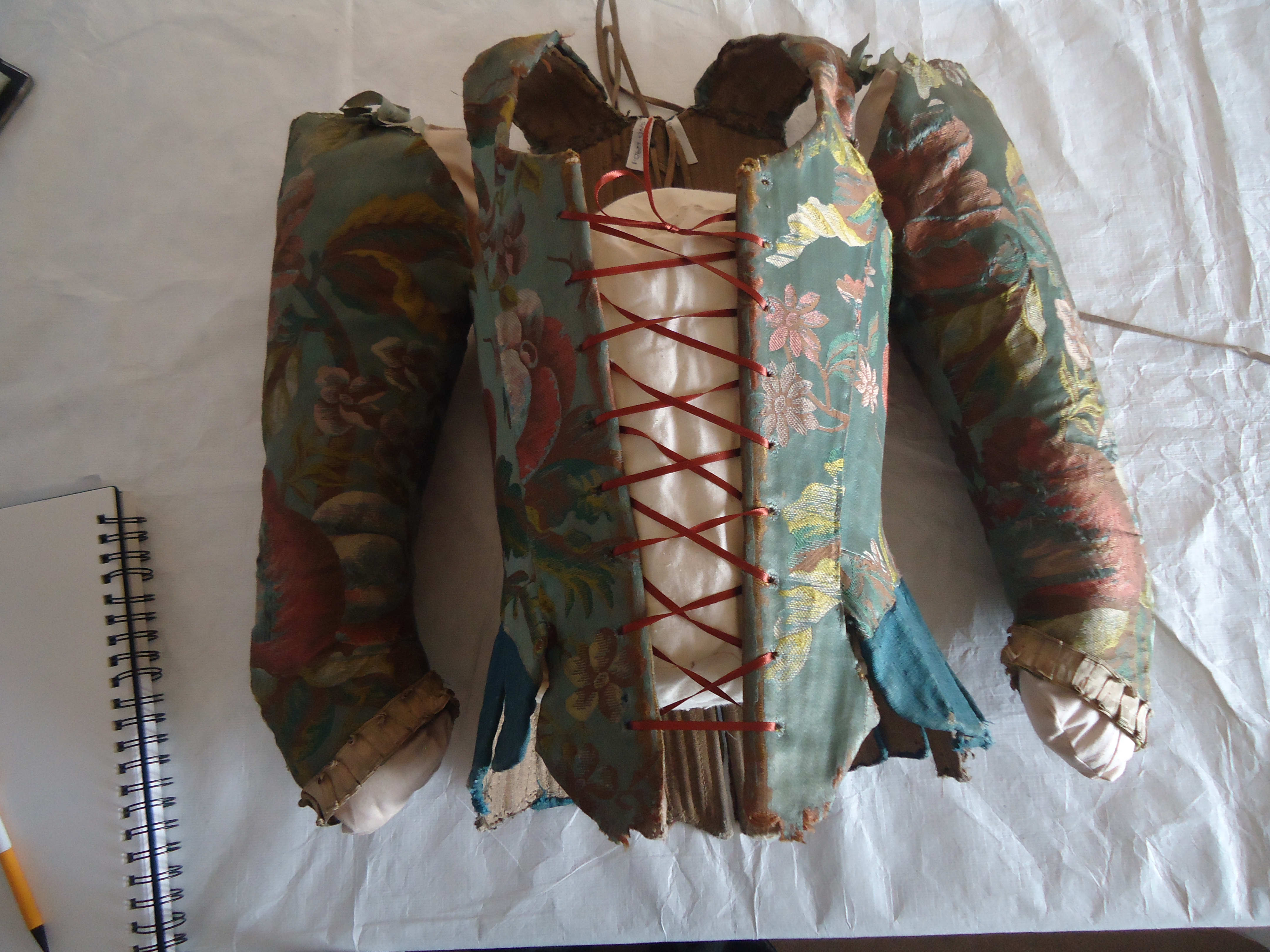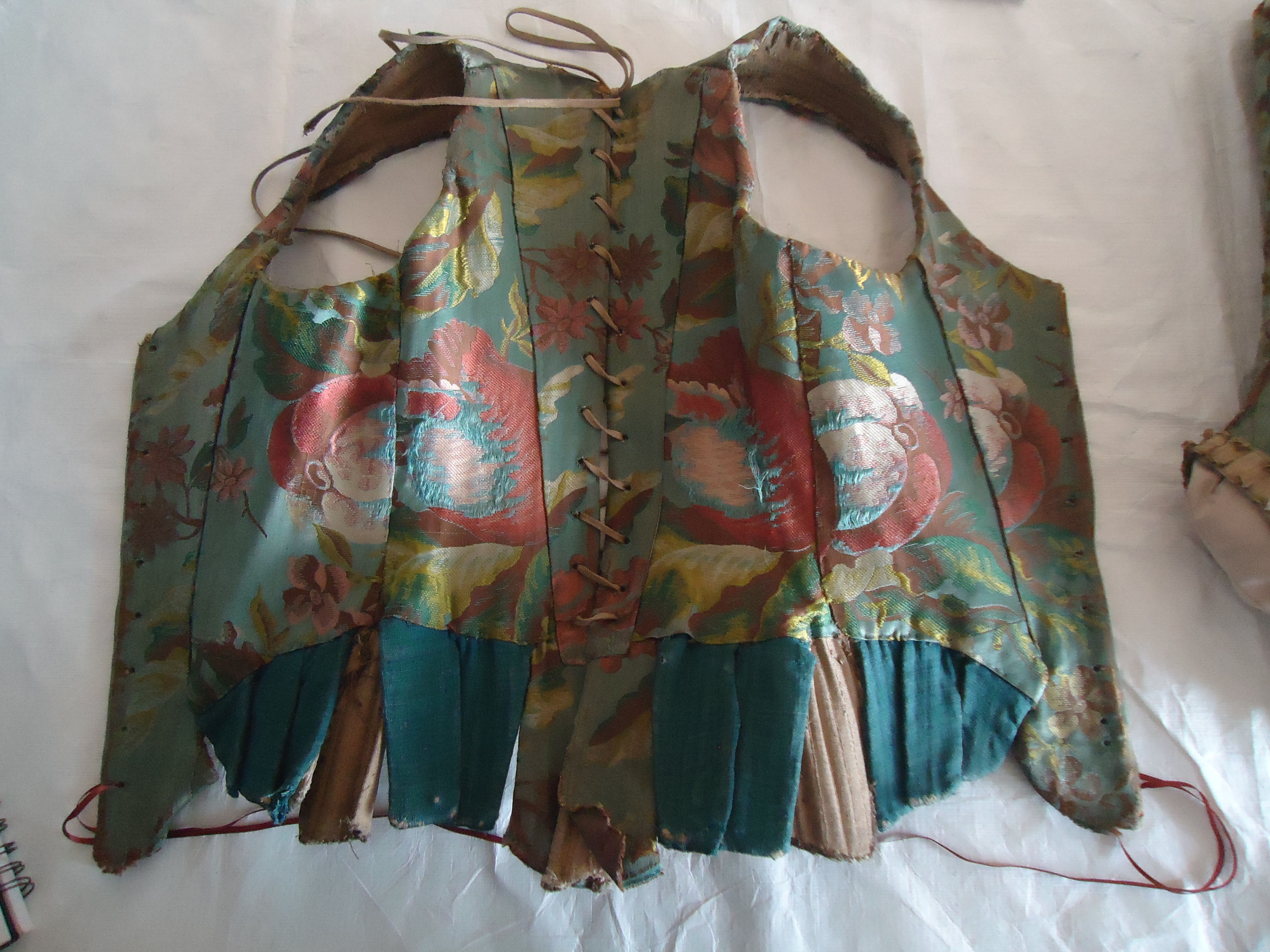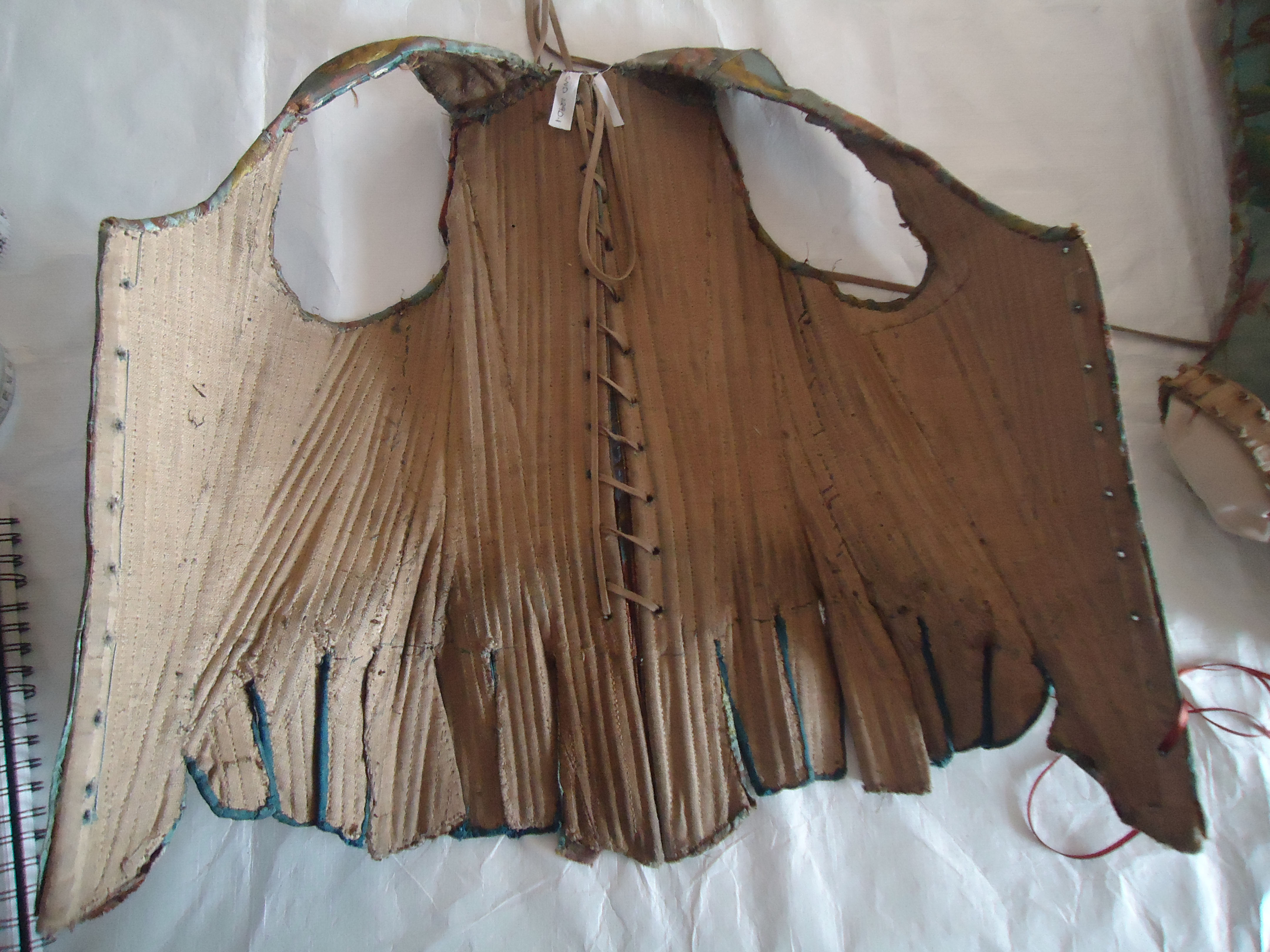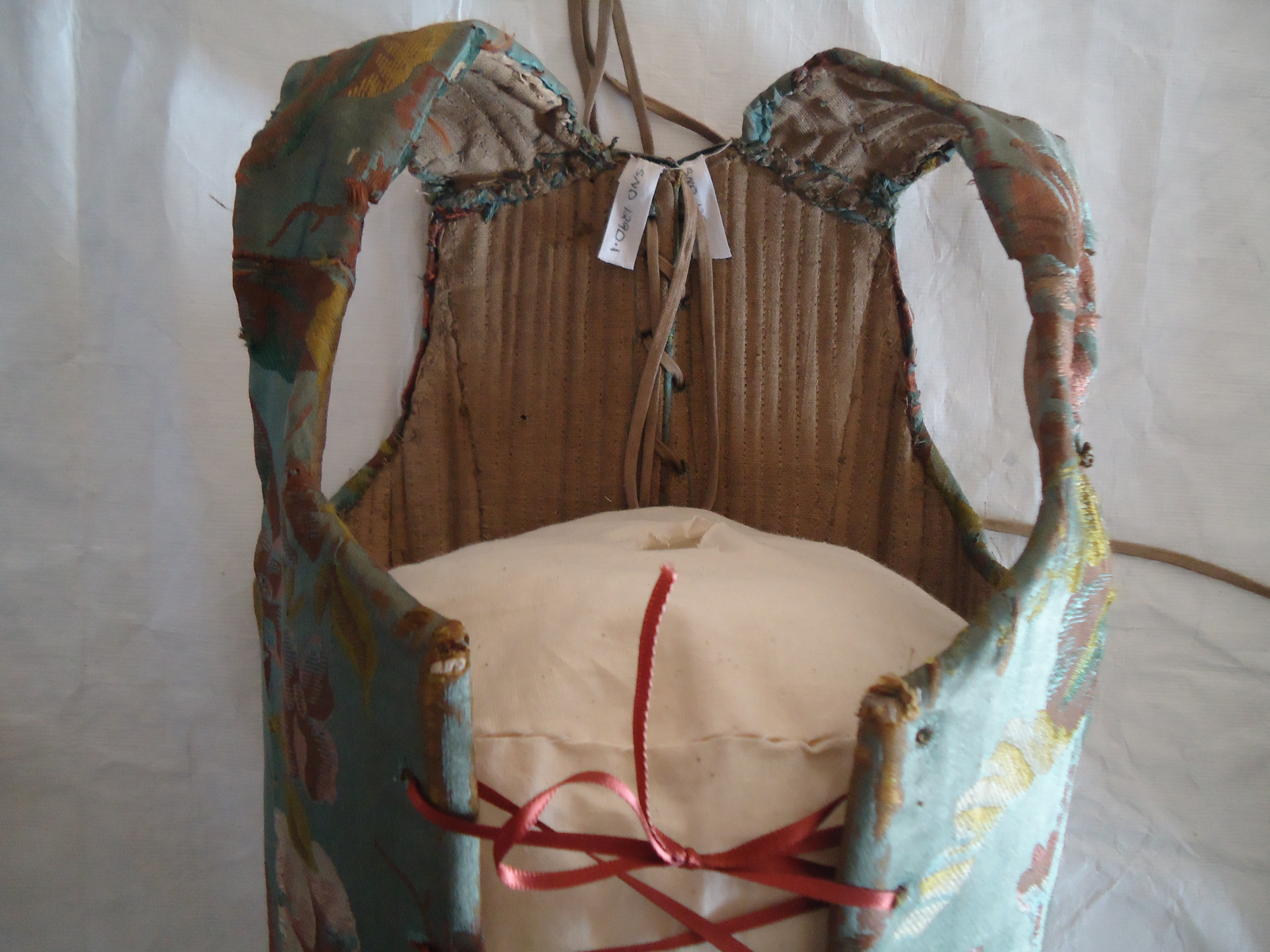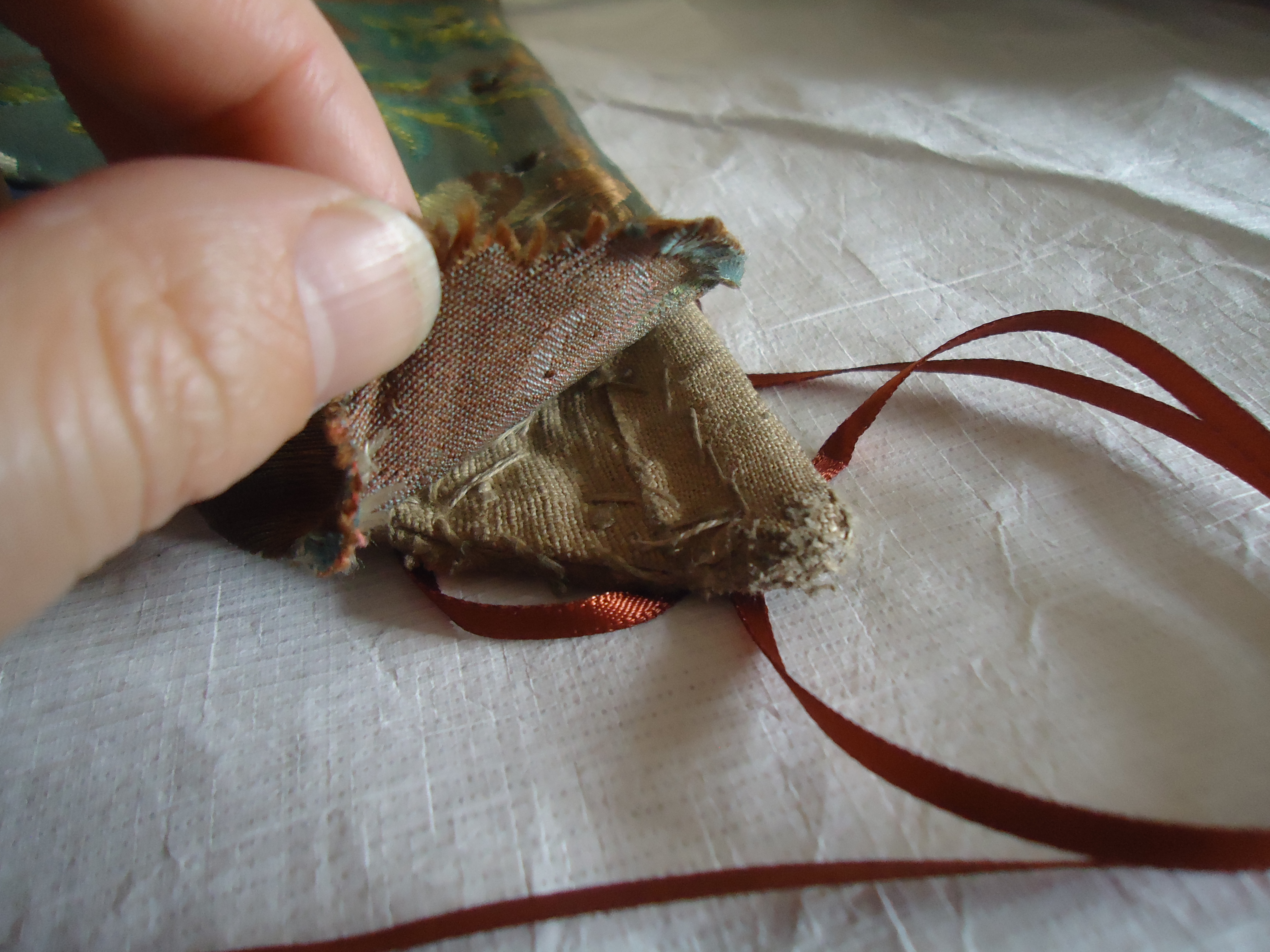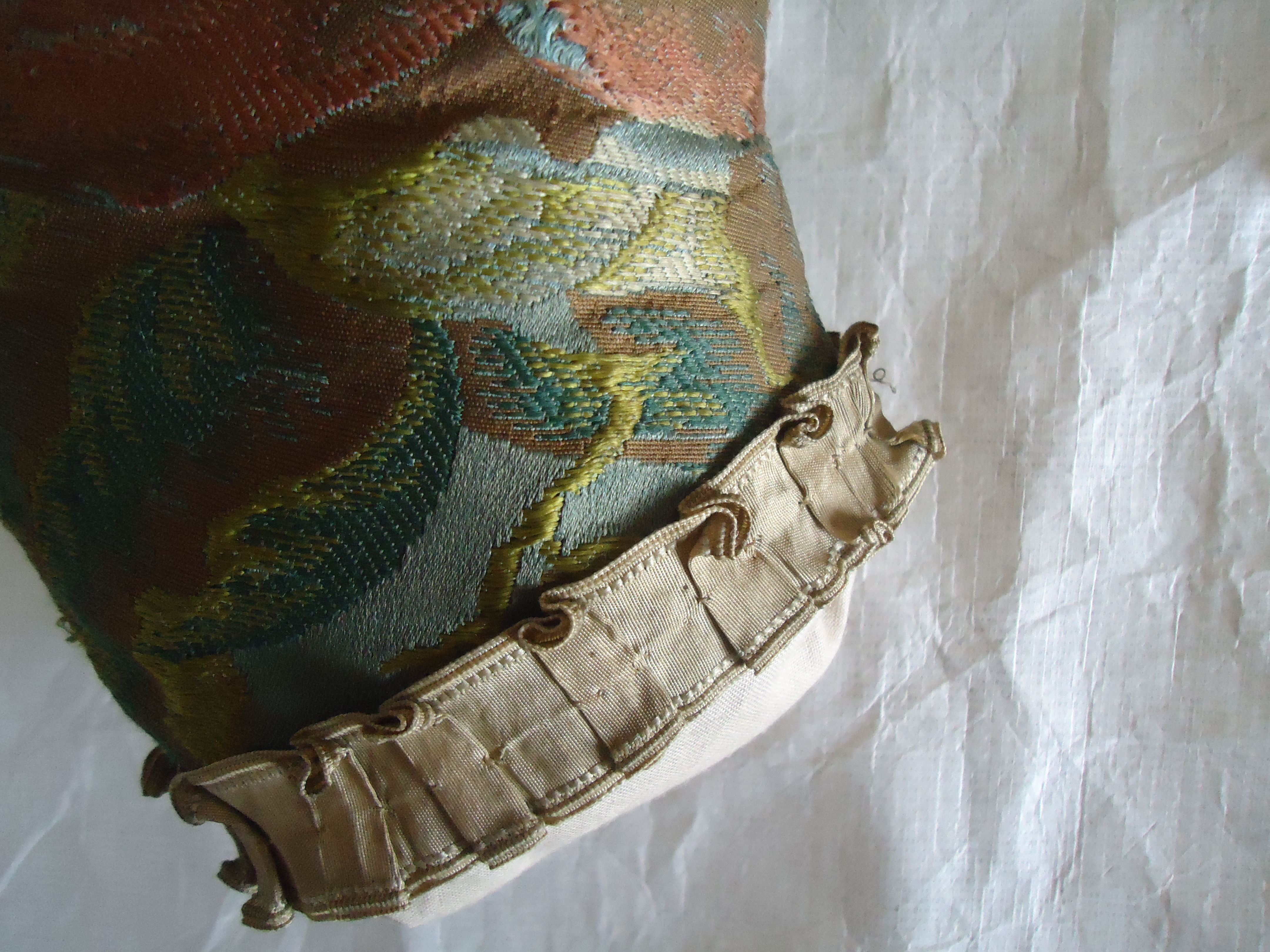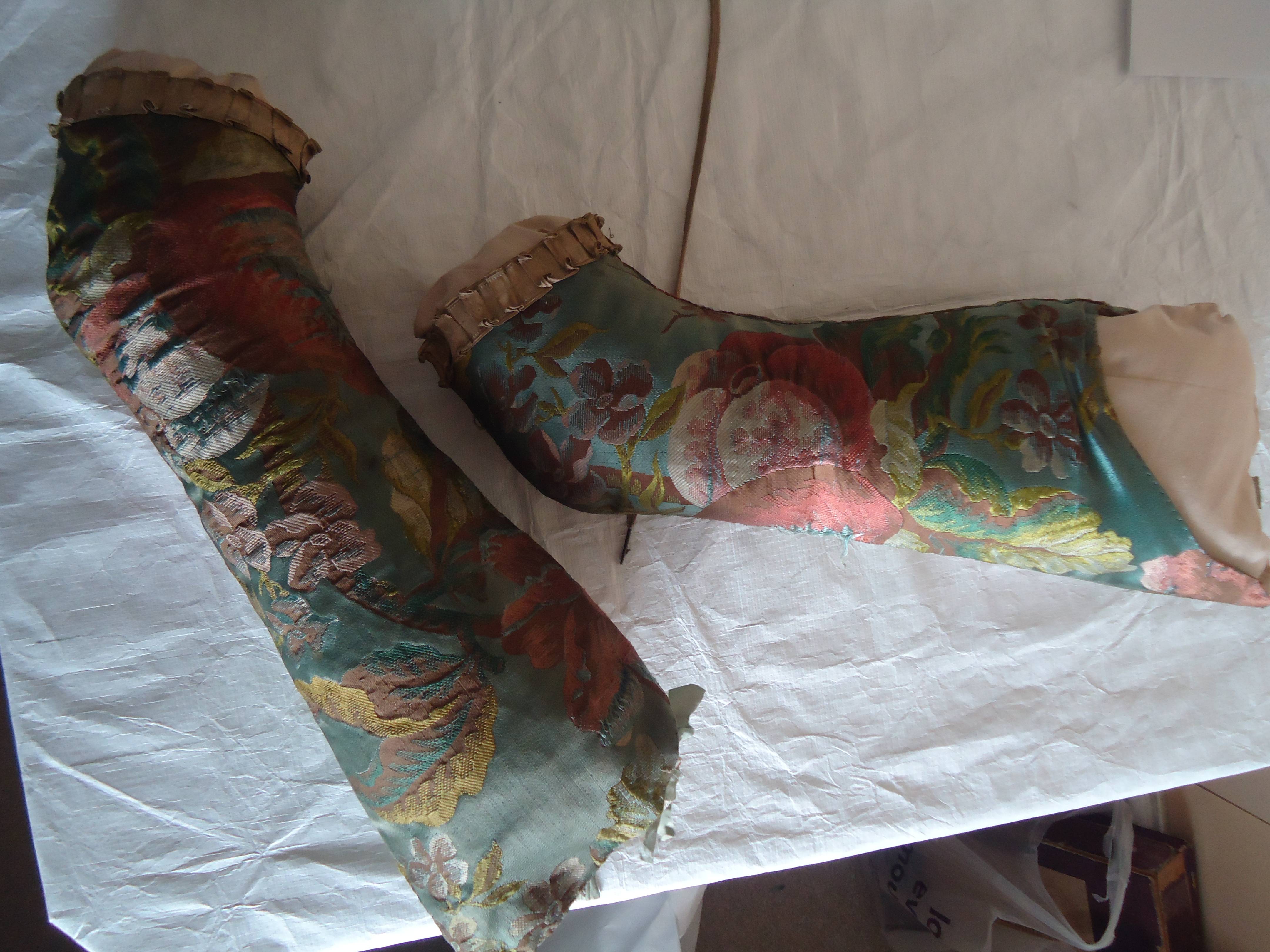Individual Garment Studies:
Boned Bodice with Sleeves:
Dated 1735-50
(Images Courtesy of Berrington Hall)
To be honest, these kind of garments stump us. It just goes to show that History is never as clear as you think it is. What we’re going to do is, infact, research this a little more. On this page you will have the usual: the photo’s taken from our study, the scan of our Sketches and notes etc but we’re also going to try to create a page to run along side this with images of this type of garment in use. Watch this space….
We’ve called them Stays because:
– No form of Stays would’ve been worn under them – ie they were acting as the body controller.
– The museum has entitled them Corset Bodice and ‘Corset’ being a later word for Stays.
– The Shape is the same.
– And most importantly, Stays was a word that was also used to describe the boned section of a dress – as in a Stiff Bodied Gown.
Details:
– CB and CF lacing.
– Tabs go deep – especially at side and CB and most are not covered. This probably means that they were designed to tuck in under the skirt and remain unseen. The height of the first tab indent matching the waistline validates this idea.
– 7 Panels.
– Straps are of the body, grown on to front and not treated seperately.
– French Silk – dated 1735-37.
– Mineral Blue Linen Tabs.
– Unlined on Inside.
– Description provided by museum states ‘Very heavily boned; eyelet holes down backs and fronts for Stomacher (missing). Sleeves attach by pieces of blue ribbon. Cuff of Sleeves trimmed with cream silk ribbons. 6 Hip tabs.
– Sleeve is deliciously curved.
Look at how short the width of the back is – we realise that they needn’t be laced up so tightly but this high, short back is a very classic shape to the 18th century. It’s a very similar shape to another pair of covered Stays that we studied at the Bath Fashion Museum.
You can see how solid and chunky that CF edge is in this image. Just look at it! The museum’s notes mention that it is missing a stomacher and certainly the proportions look like that CF was never meant to meet edge to edge. These garments are so interesting because they always cause more questions than answers and stop you getting comfortable in your understanding. The Eyelets are quite far in from the CF edge – i’d be interesting to see how it would’ve laced onto the stomacher as this is another area of on-going research.
We can’t see how these Stays would’ve ever really made the wearer appear slight. It does seem repeatedly so that the earlier stays were mich bulkier. If the wearer was slender already, they would have made her look controlled and neat whereas if she were bigger then certainly the word ‘bulky’ could be used. Back to good old Paul Sandby, but in his wonderful drawings there are a couple of images where you can tell the lady is fairly slim but her stays have made her bulky. Please click on the link here to take you to an article that discusses this topic: Did Stays Make you Bulky? We are kind of intrigued by this and are delving into more research. There certainly seems a fashion for super chunky busks to hold the stomacher out – mostly to an angle but that could be a good inch thick. There is a bit Iris Brooke uses in her book ‘Dress and Undress’ where she quote from a letter written by a mother to her daughter commenting on the fashionable shape being comparable to the women after the rape of the Sabines – which we understand to be i.e pregnant. She says, “I do not know what will become of your shape for there is a fashioin-make (of Stays) that is very strange. I believe they look in London as they did in Rome after the rape of the Sabines.” (p.83)
Lower CB Detail
Here you can see the construction of the CB of the Stays, you can see the hand-sewn eyelets. It looks like the CB tab has been made up of a seperate piece of the main fabric and there is a CB strip travelling up the back that grows in size. It’s an interesting way of doing it – there doesn’t seem to be any need for doing this. For example the CF is covered and eyeletted without the need for this separate strip, perhaps it was for decoration or to patch up with a kept-piece of fabric. You can see a line of stab-stitching running up this CB strip. You can also see how the back fabric has been sewn down over the tabs.
This CF panel looks so solid – almost like the whole thing is a busk. We’ve not mentioned anything about this is in our notes but by this time of the study session we were seriously running out of time. But here you can see the inside make-up details. It’s interesting because you can see where the inner linen has been wrapped over to the front – almost as if treating the covered silk as the lining. If you scroll back up to the Lining view you can see how this edge is neat. If you were lining it last then everything would be pulled to the back where the lining would then float over the top of it all and hide it. Here it’s vice-versa, everything seems to have been pulled to the front so that the inside of the stays isn’t lined but is all finished, neat and proper. You can tell i’s not been lined by the fact that you can see the rows of stitching – without wishing to point out the absolute obvious!
This is just to show you the image of the tab covered up again. It’s good isn’t it!
Here is such a good example of the different approach to the construction of a pair of Covered Stays to a pair of non-covered. Here is the silk from the front being folded over neatly and hand stitched down so that it is acceptable from being seen either side. If this was being done the other way it would be mercilessly lashed down knowing that it would be covered by lining. It’s interesting really, if you know you can finish the edges by pulling the top fabric over why use a seperate binding? It’s a lot more work! Answer – unknown. But it does seem that with the uncovered stays all the ones we’ve seen have a seperate binding that gets wrapped round to the back and hidden by the lining. The 3 covered Stays we’ve seen have this same folded edge and neatly wrapped over finish to them. they also ALL have the straps as part of the CF section. Interesting isn’t it! Wonder why?
What we’ve done is we have created a page to look into this further – it’s a bit of a ‘work in progress’ as the more images we find of Covered Stays so the more it will get added to. For starters we’ve put our 3 covered Stays that we’ve personally research onto it to be able to compare the similarities. Please click here and take a look – The Covered Stays.
We also have a close-up detail of the ribbon used to trim the cuffs of the sleeves:
The ribbon has been box-pleated and sewn down the centre with tacks either side of each pleat – or atleast, that’s what it looks like.
You can see the pattern construction from here – the sleeves have a seam running front and back like a pair of wartime stockings. They narrow just before the elbow, bulge out a little as they round the corner and then come to a sudden stop about 4 inches from the curve. You can also see here the slightness of the Scye and the lack of depth from Crown to Under arm.
Last but not least, although in this case they may well be ‘least’ – the study session had minutes left at this point and we barely managed drawings! But here, at-least are our brief notes on this pair of Stays.
We’ve also got some quick photos we took of us measuring the tabs – like we say – we were running out of time…

